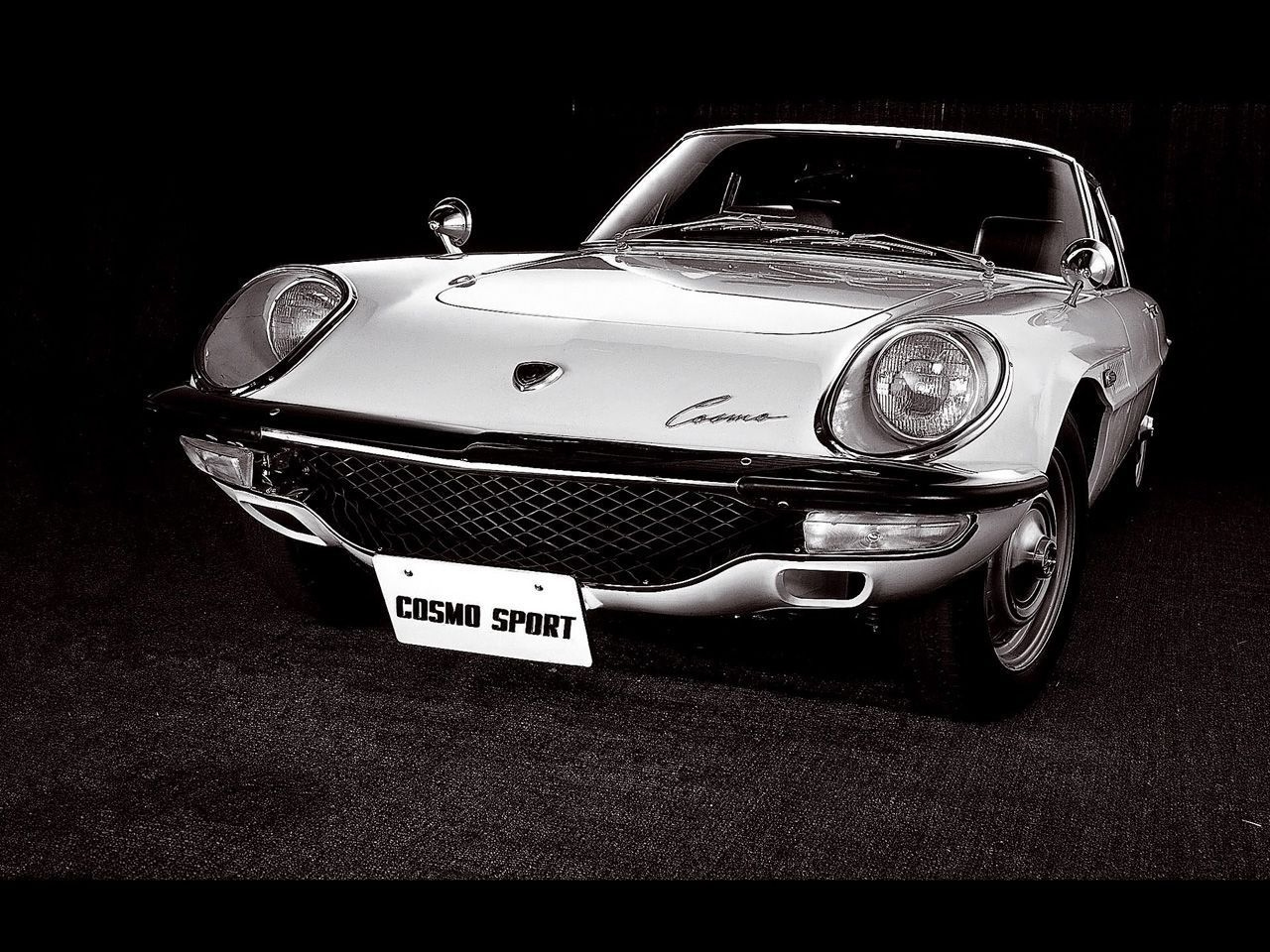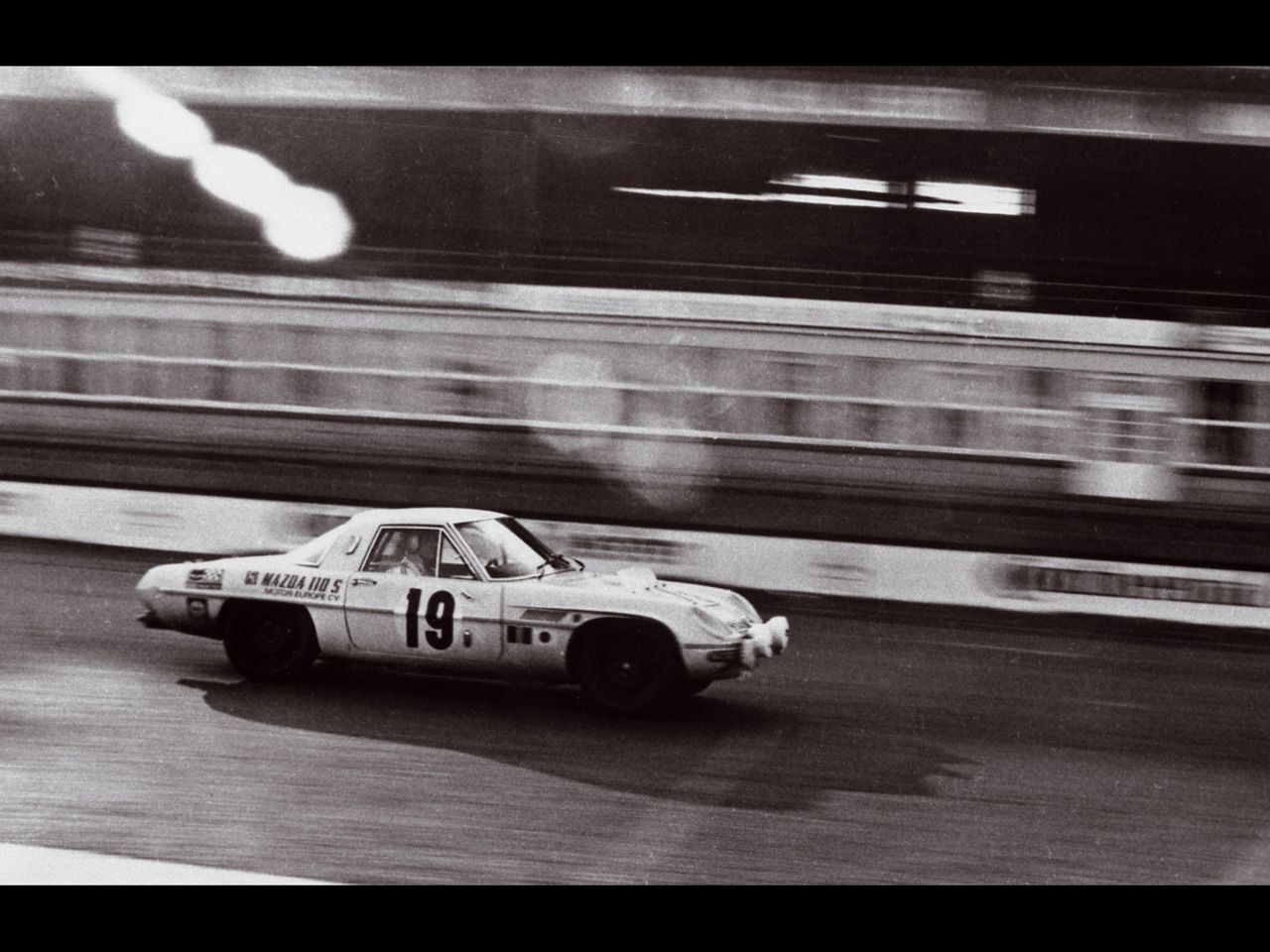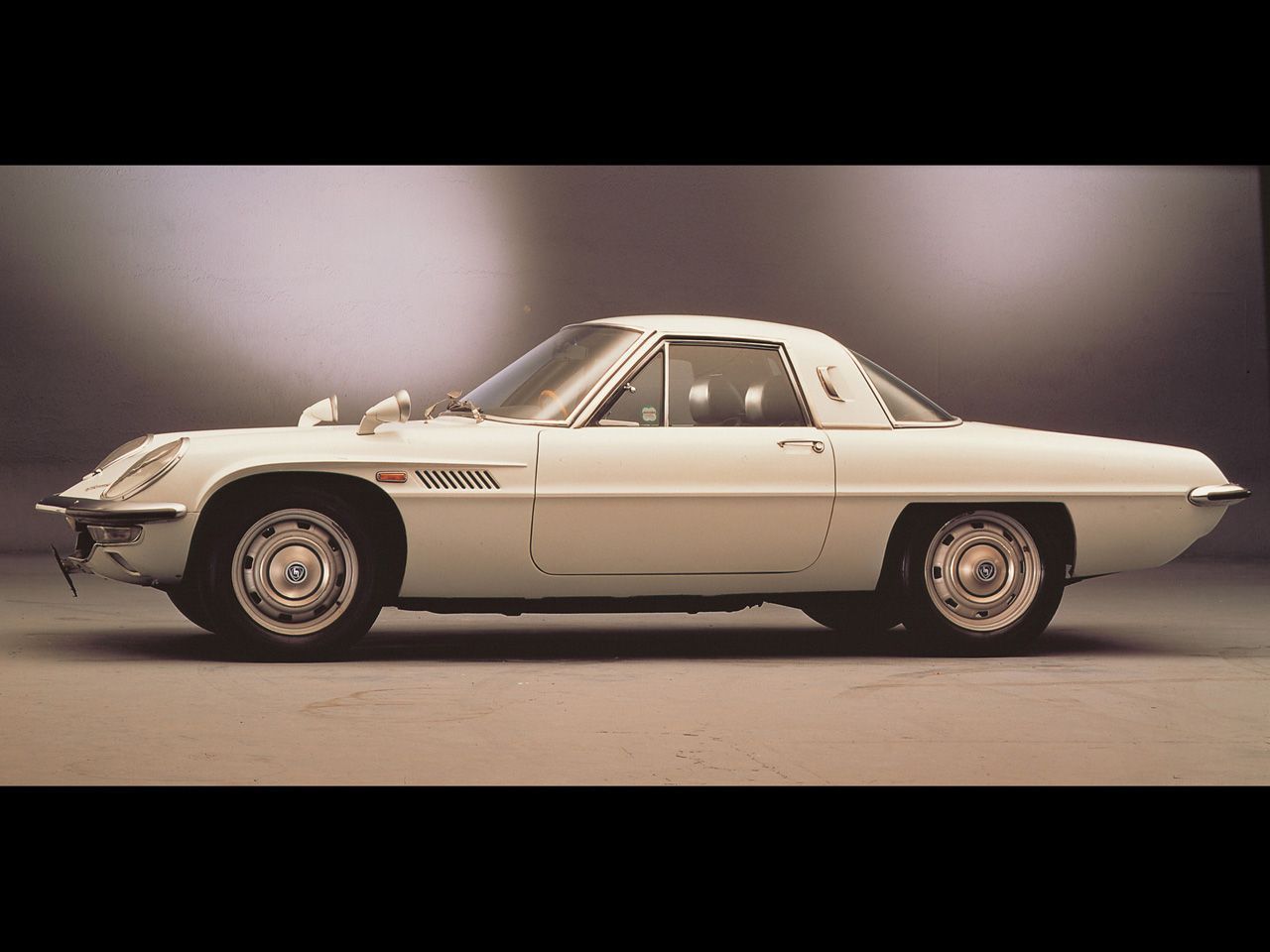


(from Mazda Press Release) Towards the Series-Production 2-Rotor Engine
In the early 1960s, during the initial development stage of the rotary engine, Mazda designed and investigated three types of rotary engine: those with two rotors, three rotors, and four rotors. The single-rotor version, prototypes of which were completed by NSU, could run smoothly at high speeds, but in the low speed range it tended to be unstable, with high levels of vibration and a lack of torque. This is due to the fact that a single rotor engine has only one combustion phase per revolution of
the output shaft, resulting in a large torque conversion, which is a basic characteristic of this engine format.
Mazda then decided to develop a two-rotor engine, in which the torque fluctuations were expected to be at the same level as a 6-cylinder 4-stroke reciprocating engine.
The first two-rotor test engine, the type L8A (399cc single chamber volume), was an original Mazda design and was mounted in a prototype sports car (type L402A, an early prototype of the Cosmo Sport) designed specifically for the rotary engine.
In December 1964, another two-rotor test engine, type 3820 (491cc single chamber volume) was designed. It soon evolved into the mass-production trial-type L10A. The 60 Cosmo Sport prototype cars in which this engine was installed were driven for over 600,000 kilometers in Japan, during which Mazda collected critical data that was used in the preparation of the series production model. Once in production, the L10A designation given to the prototype became the type designation of the 1968 Cosmo Sport.
Moreover, in recognition of the large potential of the rotary engine, Mazda invested heavily in imported and exclusive machine tools, and proceeded with the trial manufacturing of multi-rotor rotary engines, including three and four-rotor versions. Those prototypes were installed on a prototype mid-engine sports car, the Mazda R16A. Test drives were carried out on a high speed test circuit at Miyoshi Proving Ground, completed in 1965. The course was the most advanced in Asia at that time.
World’s First Two-Rotor Rotary Engine
On May 30th, 1967, Mazda began selling the world’s first two-rotor rotary engine car, the Cosmo Sport.
It featured a 110-horsepower type 10A engine (491cc single chamber volume) equipped with newly
developed apex seals made with pyro-graphite, a highstrength carbon material, and specially processed aluminum sintering. This apex seal was the result of Mazda’s independent development work and proved durable through 1,000 hours of continuous testing. Even after a 100,000 km test drive, it showed only slight wear of just 0.8 mm and an absence of chatter marks.
The intake system featured a side-port configuration coupled with a two-stage four-barrel carburetor, to keep combustion stable at all speeds. For the ignition system, each rotor was equipped with two spark plugs so that stable combustion could be maintained in cold and hot weather conditions alike, as well as on urban streets and expressways.
The Cosmo Sport was road-tested over a 6-year period and more than 3 million kilometers. The year
after it went on sale, Mazda entered Cosmo Sport in the gruelling endurance race, “Marathon de la Route” of 1968. The car finished fourth in the race against formidable competition from Europe, and its futuristic styling and superb driving performance delighted car buffs throughout the world.


